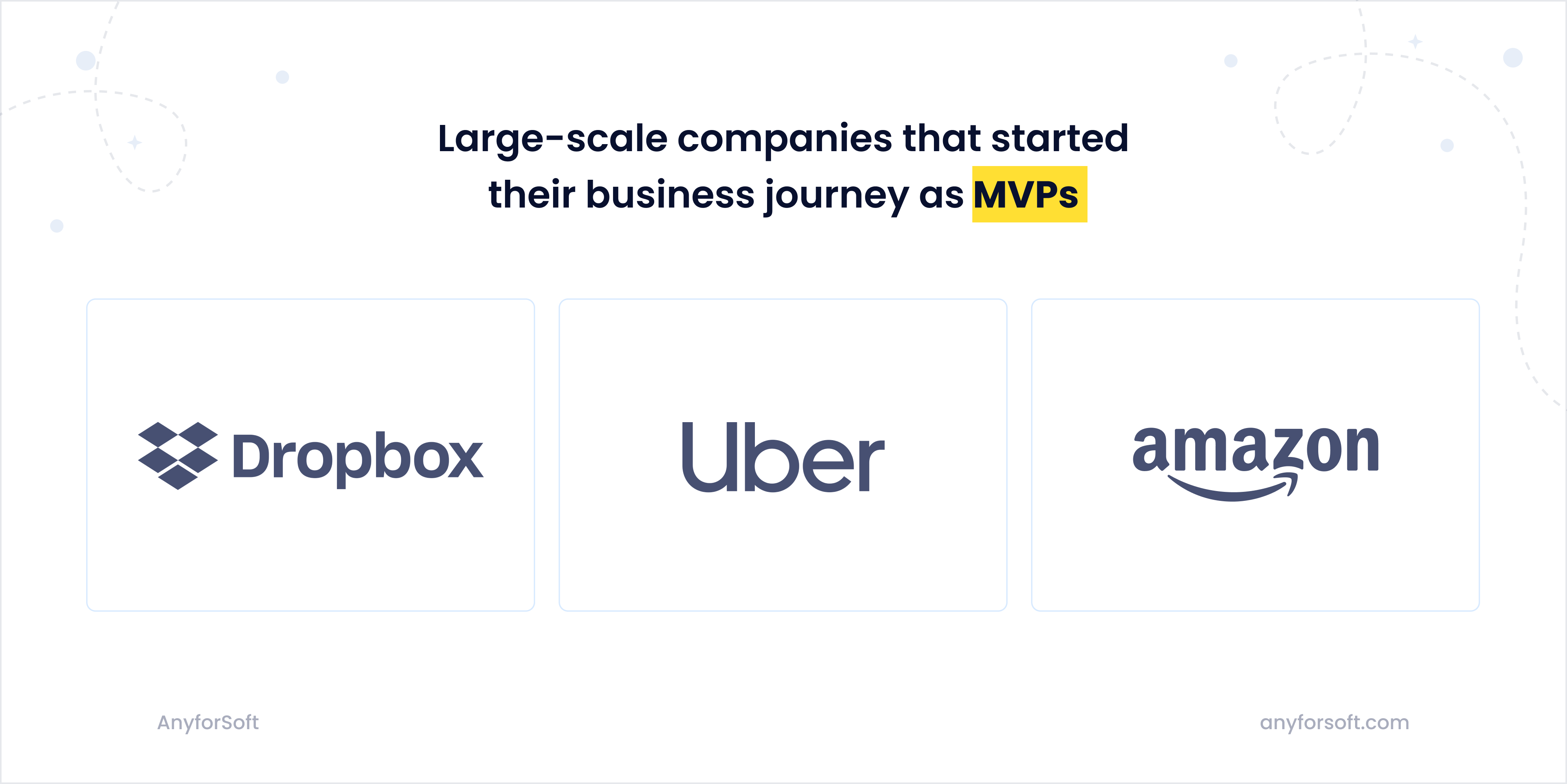So you’ve got a brilliant idea for a new product or service. The gears are turning, work is brewing, and you cannot wait to get started. But where do you start? Do you build a proof of concept (PoC) to test the core functionality? Or go straight to a minimum viable product (MVP) to get real user feedback? The path you choose could make or break your venture. And the disappointing statistics that roughly 90% of startups end in failure reminds us that there is no need to rush when choosing an approach to creating new products.
Building new products is always a balancing act. You want to move fast and get to market quickly. But you also need to make sure you’re solving a genuine problem that people will pay for. A PoC lets you rapidly validate the technical feasibility, while an MVP focuses on validating the product-market fit. Both approaches have pros and cons. In this article, we’ll explore the difference between POC and MVP and how to decide which is right for your specific goals.
What is an MVP?
An MVP, or minimum viable product, is basically the most bare-bones version of your product idea that you can release to real users. It has just enough core features to solve the essential problem and no more. The philosophy is to spend as little time and money as possible getting something out there so you can start gathering feedback right away.
It’s like making a really basic version, but one that people can actually use and pay for if they want. That way, you’re not just asking people hypothetically if they’d use your product – you’re getting real-world validation from people voting with their dollars.
Some of today’s biggest tech successes started as humble MVPs. Among these are Dropbox, Uber, and Amazon. Dropbox’s MVP was just a basic file sharing service. Uber’s was an app to request rides from Town Car services. Amazon started by just selling books online before expanding into everything else.

Such examples inspire and make you believe that any startup can succeed. All you have to do is understand how it worked for them and try on the same solution.
How an MVP Works
To understand how this seemingly unpretentious approach works, let’s look at an example. Let’s say you’re opening a new restaurant. A minimum viable product is like serving a simple, pared-down menu at first. Just the basics – a couple appetizers, entrees, and desserts. You’re not trying to be a five-star eatery right out of the gate. The goal is to get that minimum viable grub out to potential customers quickly. See what they like, what they don’t, and what’s making them hungry for more.
You study how people react to the limited offerings. Which dishes are hits? Which are duds? You get real feedback from real diners with real money on the line. It’s like having a focus group that actually pays you! With those insights, you start iterating the menu based on what’s working. The popular items stay, the flops get 86’d, and you bring in new dishes to test.
Over time, you keep evolving the menu according to demand. Expanding portions, flavors, and variety as you better understand your customers’ tastes. Before long, that barebones minimum viable product has leveled up into the full-fledged restaurant experience you genuinely envisioned. All because you started small and listened. Yet you can start with an even smaller and no less important step, which may precede your MVP development. It’s known as proof of concept.
What is a Proof of Concept?
A Proof of Concept (PoC) is something like a test to demonstrate whether your big idea can actually work in reality. It’s about validating the idea feasibility during the project discovery phase, before investing tons of time and money into the final product or MVP. The latter requires fewer resources, but there is no reason to waste them, especially when there is a PoC.
How a Proof of Concept Works
Going back to the restaurant analogy, where MVP is like serving a pared-down menu at first, a PoC would be like testing out a new cooking technique or ingredient before adding it to this menu. It’s about ensuring the core culinary idea is viable and executable in the kitchen, without any consideration for customer demand or menu design.
With a PoC project, you’re essentially evaluating the bare-bones functionality of your product concept. If your app idea is pretty complex, you might even build several mini-PoCs to test each key function separately. But a proof of concept is definitely not a scaled-down version of your ultimate vision. It’s a completely separate, self-contained project that only aims to prove your concept’s viability from an engineering perspective.
This technical trial run isn’t concerned with identifying market demand, mapping out an efficient production process, or checking all the boxes for further development. Nope, a PoC deliberately keeps things lean by zeroing in on just one question: can we build this thing? It lets you validate assumptions about whether the underlying concept is even possible before overcooking investments.
Think of PoC as the “Can we?” checkpoint before diving into the “Should we?” of an MVP.
Reasons for Using an MVP vs. PoC
Your startup’s path can take different routes – building an MVP or crafting a PoC first. Here’s a rundown of some major reasons for using MVP vs PoC to support your decision:
You Might Want to Build an MVP to:
- Receive real feedback from those who matter most: your target audience through user testing
- Confirm if there is any demand for your product and how the market will perceive it before any significant investment
- Find out what your customers’ pain points are and react accordingly, based on the user interaction
- Begin generating profit as early as possible
An MVP allows creating the minimum number of primary functional features to start testing your business concept with potential users. It is an excellent way to establish product-market fit, while at the same time being a lean-first step that minimizes additional financial risks and development time. As a result, you test the base of further development stages and create the starting point of the technical product roadmap.
You Might Want to Start with a PoC to:
- Check the possibility of implementing complex technology before full development
- Get the necessary technical groundwork to make your business idea possible
- Be able to experiment with the most viable solutions that do not require much significant investment
- Get buy-in from stakeholders by demonstrating core capabilities
- Discover any potential issues while ensuring you do not commit additional resources
A proof of concept is valuable when you need to test out the foundational technologies behind an ambitious, unproven product vision first. It focuses solely on confirming you can achieve the intended functionality, separate from market validation.
Proof of Concept vs MVP: Key Differences
While proof of concept and minimum viable product have some similarities, there are important distinctions between the two, and the decision of whether to pursue a PoC or an MVP should be made deliberately. Here are a key difference between MVP and PoC:
Function:
- PoC serves to demonstrate that a concept can be built and work as intended
- MVP provides a streamlined yet functional product experience to test
Scope:
- PoC represents a narrowly targeted process proving that something can be done
- MVP is a complete, although minimal first version of something which allows certain problems to be solved
Audience:
- PoC is an internal stakeholder report comprising, to a significant degree, technical information
- MVPs target early adopters and potential users to gather real-world feedback
Stage:
- PoC acts as a prelude to the actual product design
- MVPs kick off the iterative development process based on usage insights
Investment:
- PoCs require relatively low upfront development costs
- MVP software development involve higher initial investment to build a launchable first version of a product
Development Timeline:
- PoC can be made in 2 days to 1 week
- MVP takes 3 to 5 months to develop
Revenue Generation:
- MVP allows you to test the product on customers, generating income
- PoC will not produce revenue from customers
Outputs:
- PoCs enable progressing confidently to full production
- MVPs shape the product roadmap for enhancing and refining the final version
The most important distinction is that PoCs are highly focussed technical experiments, whilst MVPs are real, market-facing release candidates. PoCs derisk feasibility, MVPs derisk demand.
Similarities of PoC and MVP
Differences aside, MVP vs PoC approaches are united by a shared philosophy: the pursuit of validation through an iterative, feedback-driven process. Let’s highlight the common ground they share, which often makes them complementary stages in the product development lifecycle:
- Lean Approach: Both PoCs and MVPs follow a lean methodology, allowing companies to test their ideas with minimal resources before investing heavily in building the complete product.
- Early User Engagement: By releasing these initial versions, businesses can interact with early users and stakeholders, collecting insights to shape the development roadmap.
- Risk Mitigation: By PoC or MVP development, companies can identify potential risks, technical challenges, or market fit issues early on, reducing the chances of costly failures down the line.
- Iterative Refinement: Based on the feedback received from early adopters, companies can iteratively refine and enhance the final product, ensuring it aligns with user needs and market demand before investing in a full-fledged product launch.
How to Choose the Right Approach for a Startup?
What approach to choose, MVP or PoC, largely depends on what your startup’s goals, resources, and the stage of product development you’re in. If you have a unique, or even revolutionary, idea, in this case, you would need to validate its technical feasibility before you start investing your time and money. The same goes for when your intention is to explore and try out several technologies to then choose the one that works best for building your product. Besides, it’s possible to receive seed funding as a PoC stage provides a water-tight case that your idea can work. Lastly, if you’ve got a modest but meaningful project that could benefit from both types of validation and potentially attract investment or be financed at the early stages, a PoC is definitely the option to go with.
On the other hand, you should build an MVP if you need to test the waters and obtain feedback from the first users to see what the market reaction will be before you create the whole product. The same goes for when your priority is to make money sooner rather than later and check for yourself that your business model is efficient in generating revenue. Finally, when your risk of failure is high, building a minimal value product allows you to put your product to the test at a significantly lower investment and develop tools and features you absolutely need. Both evaluation efforts mean you should be able to get away with building a very cheap version of the product.
To help you make the right decision faster, here’s a cheat sheet that is bulleted below.

If resources permit, consider an iterative approach:
PoC → Prototype → MVP → Full Product
Final Thoughts
The choice between proof of concept and minimum viable product is essential for any startup or settled business. Both ways of developing a product have their place, and which suits better depends on the current state and specifics of the venture. In the first place, let’s suppose that a new, sometimes even a disruptive idea should be tested for technological feasibility. In this case, a PoC should be developed. This will allow creators to play and experiment with different technologies and approaches, and learn what the risks, promises, and VC interest in their product are. On the other hand, MVP is the optimal choice if the priority is to gather user feedback on the concept, validate the demand, and start monetizing the idea quickly.
In the final account, the choice between PoC and MVP should be preconditioned by the available resources, the complexity of the idea and business process, as well as the stage of development. Sometimes, especially if we are talking about highly complex, even innovative ideas, a combination of the two approaches may be the only viable solution.
At AnyforSoft, we understand how crucial these early stages of development are. We have immense experience working with startups and well-established businesses to translate their ideas into functioning marketable products. Whether you need to build a product development team to get the best PoC, prototype and MVP development services, or simply seek guidance on the best approach for your unique circumstances, AnyforSoft is here to support you. Our team of experienced professionals is committed to delivering high-quality results while ensuring positive feedback from users through meticulous UX design and development practices.
If you’re interested in transforming your innovative idea into a PoC, prototype, MVP, or any other stage of product development, please don’t hesitate to get in touch. Our team will be happy to learn more about your plans and goals and find the best way to implement them!








